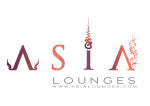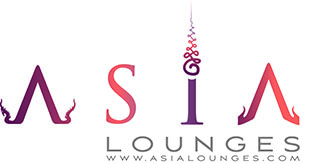Hey Loungers,
The last time we interviewed E. Billie Hughes was about two years ago, as Lotus Gemology was growing fast but, we kind of forgot to ask about one of the most talked about features of their lab: Hyperion Photo Library!
Some of you may have heard of it here, others have visited it out of professional curiosity while others just wanted to take a look at the art that the Lotus Team, with Billie as their vanguard, produces with a photo camera and a microscope.
This said, few of us know how this amazing tool got created. Billie, the floor is yours. Thank you very much for being with us in the Lounges again today.

Follow Lotus Gemology´s E.Billie Hughes as she tells us more about the birth of Hyperion
Asia Lounges: Can you tell us more about this amazing tool? I mean what is it exactly?
E. Billie Hughes: Hyperion is Lotus Gemology’s searchable database of gemstone inclusion photomicrographs. These are photos that we have taken of gemstones as seen through the microscope.
You can search through our library of 900+ photomicrographs, which can be sorted by the stone’s type. For example, you could look at natural and synthetic rubies to see what types of clues we can use to differentiate them. You could also search by country of origin, like Burma vs. Mozambique, or by enhancement to compare untreated stones to heated stones. It’s also possible to search by keyword (for example “fingerprint”), or any combination of these factors. By studying these features we can get more accurate results in the lab.
We update Hyperion regularly as we take new photos, so it’s a working database that expands as we grow our collection of images.
This is all available to the public on our website, free of charge.
Here is a fragment of the fingerprint in corundum collection in Hyperion, discover more here=>
Asia Lounges: When you say that you can compare pictures in order to get the information you need, does that mean that you can do so directly from the program? As in from the very same page of the website? Could you perhaps show us an example of how you’d do that?
E. Billie Hughes: You could open two windows up to compare side by side. Say you’re looking at a ruby but you’re not sure if it’s from Thailand or from Mozambique. You could do searches side by side to compare Thai to Mozambique rubies to see which features better match those of your stone.
We’ve also paired many photos that show interesting relationships here on our page “Hyperion Siamese Twins.” That’s a great place to start.
Asia Lounges: Everywhere I go, when people mention Hyperion they somehow consider this as a bit of a revolutionary tool. What is the reason behind that train of thought?
E. Billie Hughes: We’ve gotten a lot of positive feedback since we created Hyperion for a number of reasons.
For one, I think people appreciate the quality of the content. We try to create images that are both aesthetically pleasing and educational.
Having this system available for free online also gives it a portability and accessibility that you don’t get from some other resources. Books like our Ruby & Sapphire: A Gemologist’s Guide and the Photoatlas series are a great reference tool, but they’re a lot heavier to carry around!
Explore Thai and Cambodian Heated Ruby Inclusion with Hyperion
There are also a couple features that are especially helpful for people doing research, including lab gemologists and gemmology students. One is the search functions that make it easier to find information. Another is the bibliographical references that we include with each photomicrograph that make Hyperion a good jumping off point to do further research.
Asia Lounges: You mentioned to me once that you used to use Hyperion as a tool for your gemmological studies, can you tell us more about that?
E. Billie Hughes: Lotus Gemology is a family business, and I work alongside my parents. When we started the company a few years ago, I was new to gemmology and had recently finished my FGA, a gemmology diploma from the Gemmological Association of Great Britain. So, when I started working in the lab I had an educational background but not much practical experience.
As I started testing stones, I was learning in a hands-on way, but still had a lot of questions. When I asked my dad how he could, for example, separate a ruby from Burma or from Mozambique, he said “When you’ve been doing this for 30 years, you know how to recognise the differences!”
Find out what Hyperion has to say about heated Mozambique rubies
Because of my lack of experience, I realised I needed a way to process everything I was learning. So, I started taking pictures of any interesting features, along with a short description. Then when I had a question I would search through these notes on the computer. I started relying on this more and more as a tool when testing stones. Soon my parents asked what I was doing. When I explained it to them, they said it was a great idea, but pointed out that if I found it useful, chances were that other gemologists would too. That’s when we decided to make it available online.
Asia Lounges: Would you describe Hyperion as solely a tool useful to gemmology students or do you believe that it goes beyond that?
E. Billie Hughes: There’s no one right or wrong way to use Hyperion, just as there’s no right or wrong audience.
We’ve heard from both students and working gemologists from other labs that are using Hyperion. Some people appreciate the technical side, while others enjoy the more artistic side of the images.
Asia Lounges: Have you ever considered exposing these pictures offline? Are they or have they been available for sales so that your fans may gaze upon your amazing shots from the comfort of their home or offices? I understand your fellow Microteers: Danny Sanchez and Nathan Renfro to name only them, are selling some of their shots online for example.
Award winning shot "Excuse Me While I Pierce The Sky" by E.Billie Hughes exposed at Tongji University
E.Billie Hughes: While we’ve had requests to publish the photos in gemological journals and books, they’ve also been used for other purposes.
In fact, recently we were contacted by a Swiss jewelry store that bought several photos from Hyperion to use as artwork in conjunction with the launch of their latest collection. Earlier this year Tongji University in Shanghai displayed a selection of the photos in an exhibition at their library.
Lotus Gemology´s Hyperion Exposition at Tongji University
Asia Lounges: Today, Hyperion is mostly used to reference inclusions photography of ruby, sapphire and spinels but, are you planning on turning it into a bit of an online and updated version of E. Gubelin and Koivula’s Photo Atlas?
E. Billie Hughes: We’re pleased to announce that starting this year, Lotus Gemology is accepting other types of coloured stones for reports! That means that in addition to ruby, sapphire, and spinel, you can now submit a garnet, tourmaline, aquamarine, and other types of coloured stones.
I’m excited for this new development because we’ll definitely use this opportunity to take more photos in these other materials. Of course we’ll add these new photos to the database with our regular updates.
I think it would take years and years to even come close to the breadth and depth of the information available in the Photoatlas series!
(Re)Discover Lotus Gemmology´s Richard Hughes work on Russian Emeralds and Alexandrite
Asia Lounges: Have you ever considered having other photomicrographers contribute to Hyperion? Is it already the case?
E. Billie Hughes: The vast majority of the photos on Hyperion are created by Lotus staff, but we are open to collaboration.
John Koivula, the famous photomicrographer behind the Photoatlas series, has graciously donated some of his images to the database.
If others would like to contribute, we would take that into consideration. However, I know many photographers are wary of putting their work up online because they are concerned about images being used without proper credit, which is a legitimate concern.
Asia Lounges: How can other photomicrographers submit their pictures to you guys for Hyperion?
E. Billie Hughes: They can email me directly at billie@lotusgemology.com.
Asia Lounges: Hyperion as a tool is obviously very useful to gemologists worldwide and, to the best of my knowledge, it’s the only inclusion library that is basically free of charge. Is it something that you are planning on monetising at one point or is it, somehow, Lotus Gemology’s team gift to the world?
E. Billie Hughes: We don’t currently have any plans to charge for it, or for the educational articles that we also post on our website. Hyperion is really the tool I wish I’d had when I was a student, so I hope we can continue to keep it available to the public so a wide variety of people can use it.
Our research is funded by the revenue we get from issuing reports and the sales of our books. It is thanks to the support of our clients that we are able to make Hyperion available for free.
If you have found Hyperion helpful, we would ask that you support it by buying our books and asking for Lotus reports on your coloured stones!
Asia Lounges: In today’s world where, everything seems to go numeric and mobile, can we expect Hyperion to become a portable app? Have you ever considered making it a Mobile App to help your fellow gem hunters, such as Wim Vertriest, as they go in the bush to see new deposits or simply to help gem merchants identify gems on the go?
Curved colour banding in Verneil-grown Synthetic sapphire - Or a nice way to showcase the Lotus Gemology´s team love of gems and inclusions
E. Billie Hughes: Right now we don’t have plans for an app. I can understand the appeal, but at the moment we don’t have the resources to devote to a project like this.
You can still access the database on your phone or laptop, although you do need an internet connection. I, however, prefer using it on my desktop computer, because I think the big screen is the best way to display these photos and see all the details!
Asia Lounges: Thank you very much for your time and dedication Billie! We sincerely hope that our readers enjoyed reading these lines as much as we did writing them with you. Hopefully you will see them again following your Lotus Gemology Instagram and Facebook accounts as well as your ever growing inclusion library.
Let us not forget that you will be presenting Hyperion in Tucson, Az, on Wednesday February 6 2019 in Graham Room of the Tucson Convention Center from 13:00 till 14:00. Surely it is a rendez vous that our readers and your fans will not want to miss!
As for us, I hope to see you again very soon in the Lounges and to being able to provide you with more fun facts about the gems and jewellery industry!
If you liked what you have read so far in our pages and want to support A Gem Dealer's Journal, here is a link to our Patreon's Page.
See you in the Lounges,









